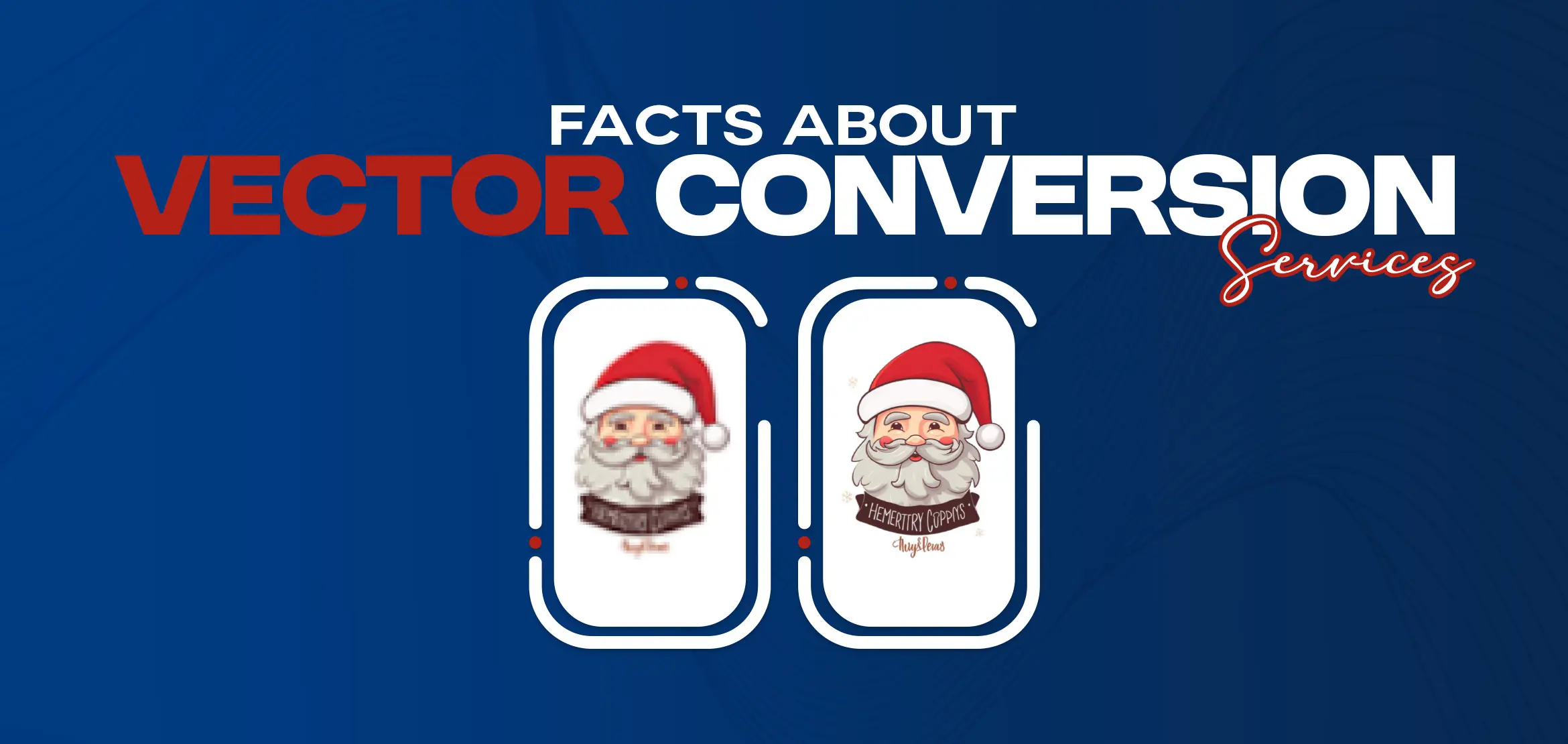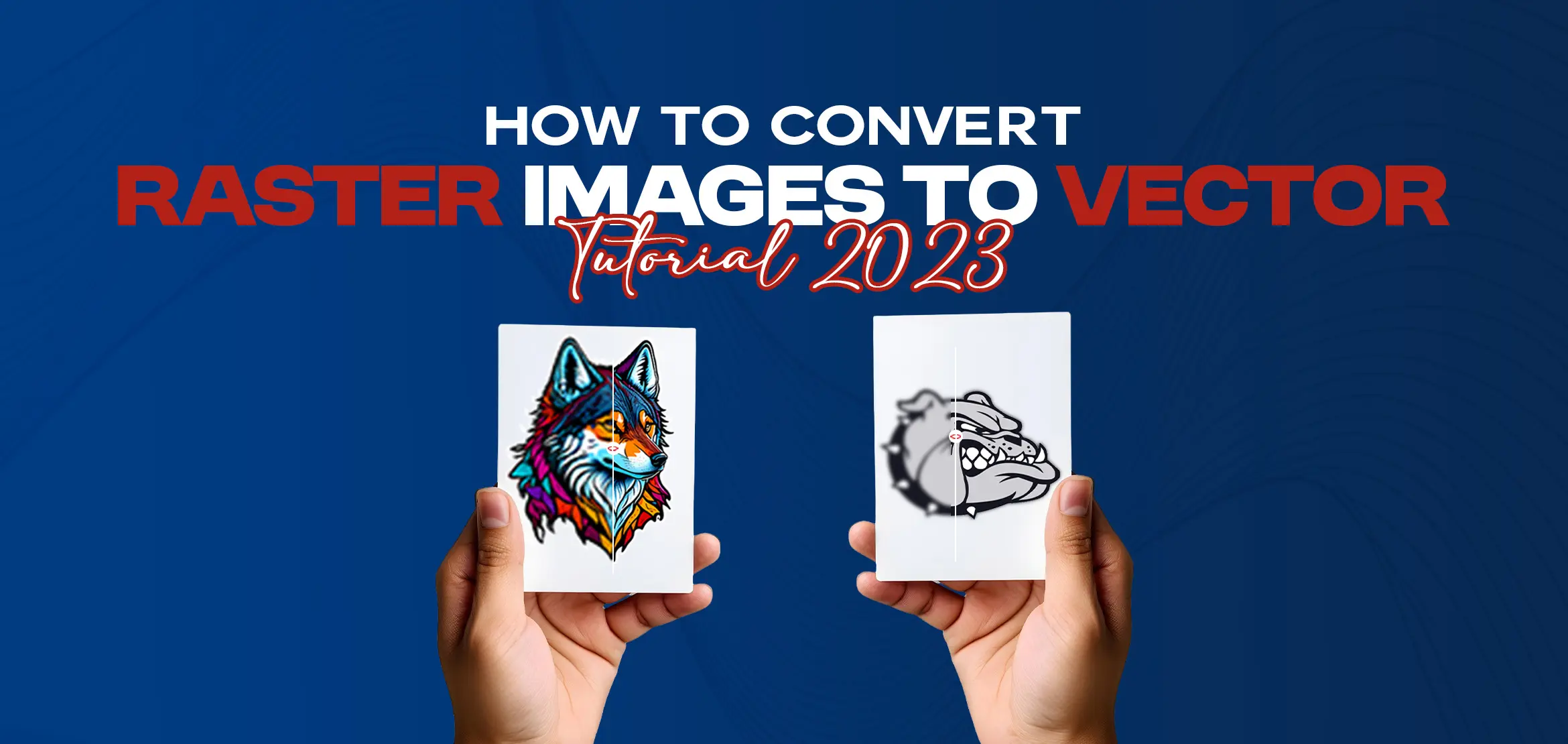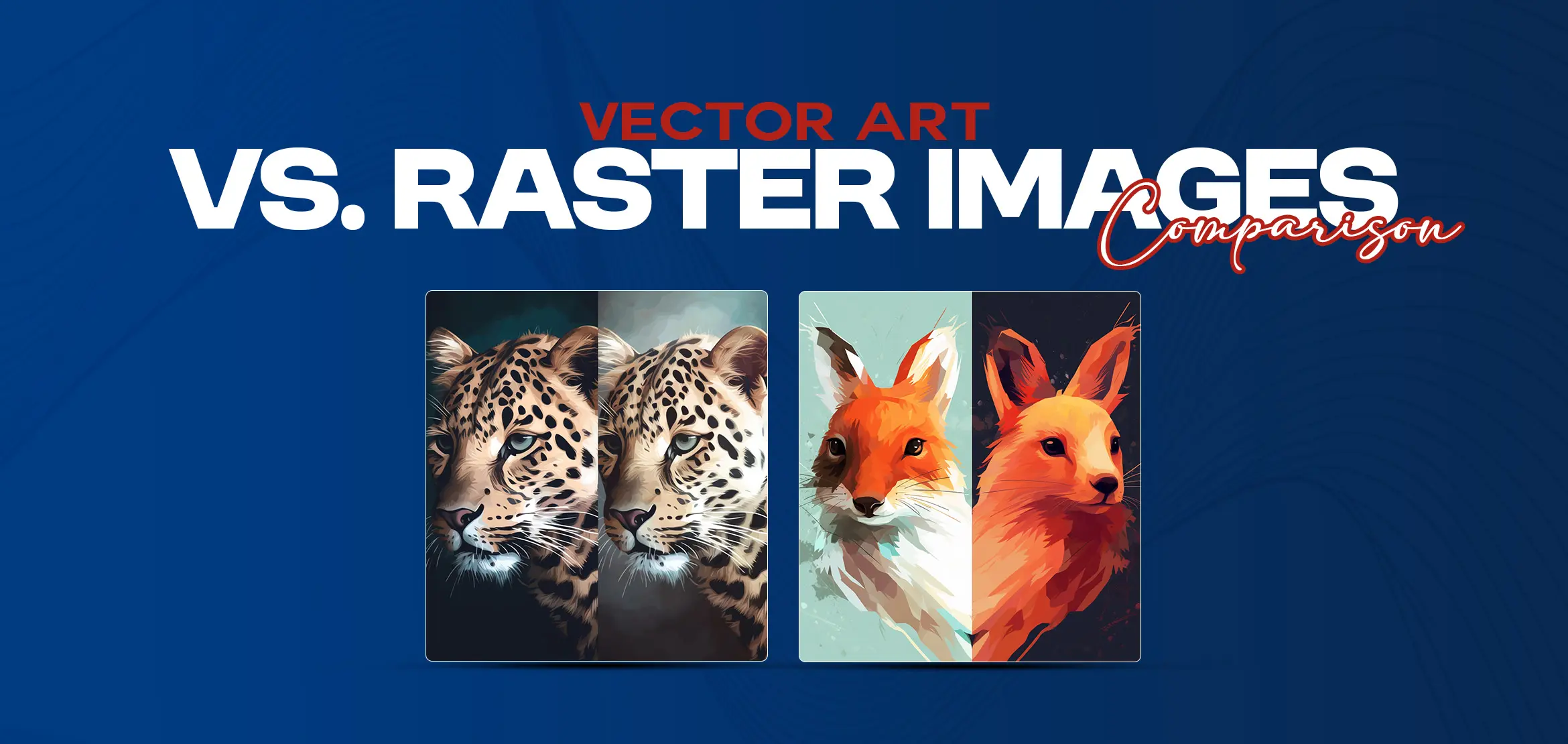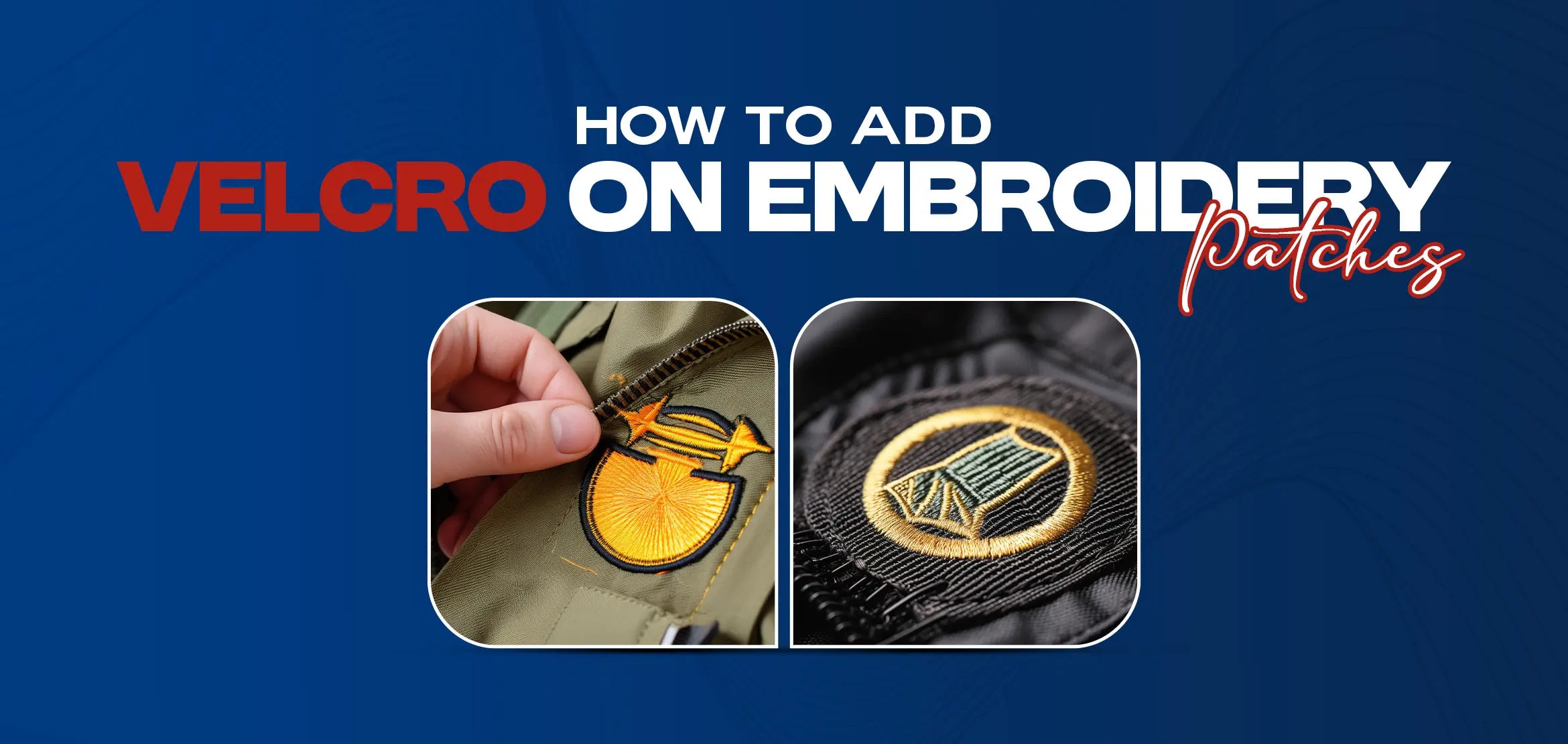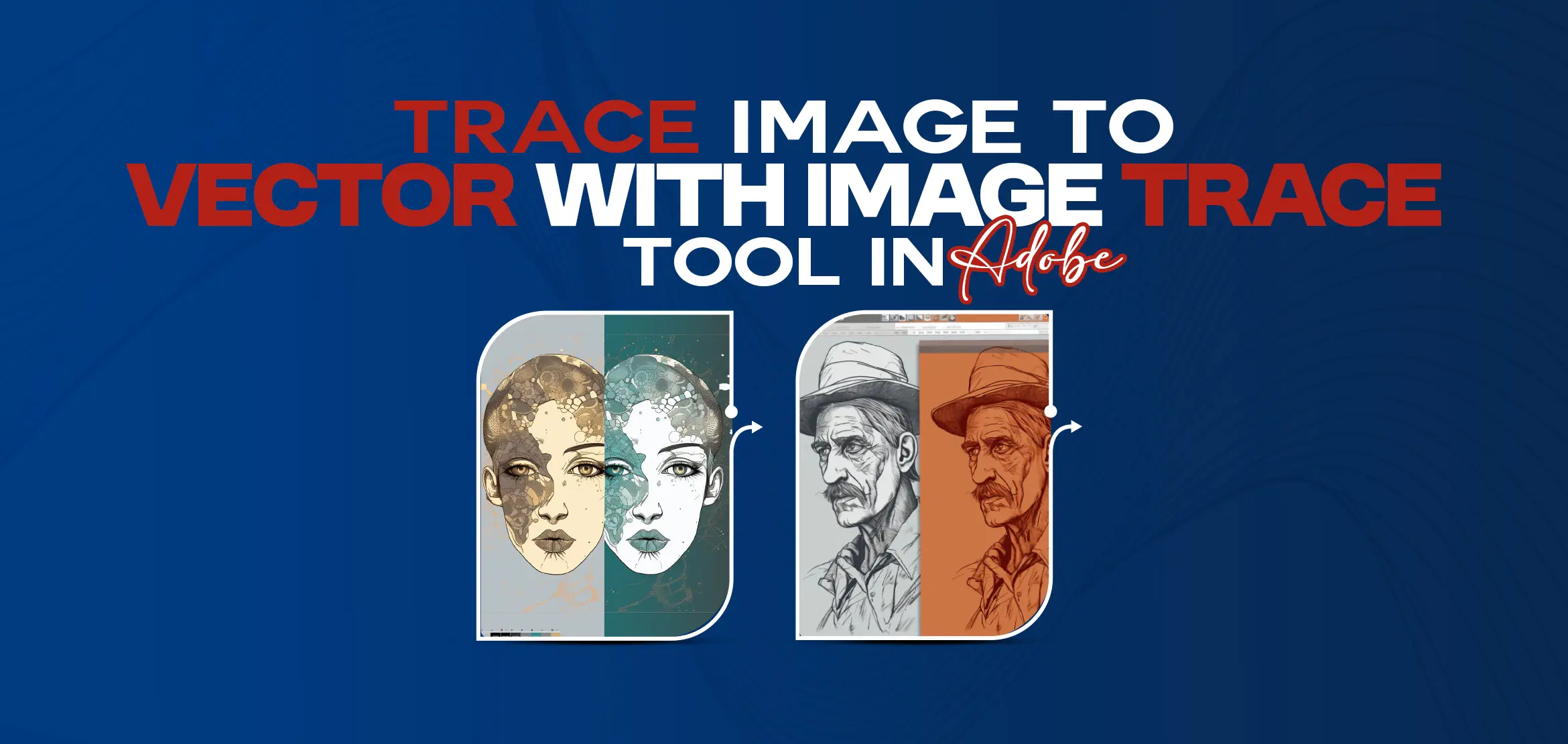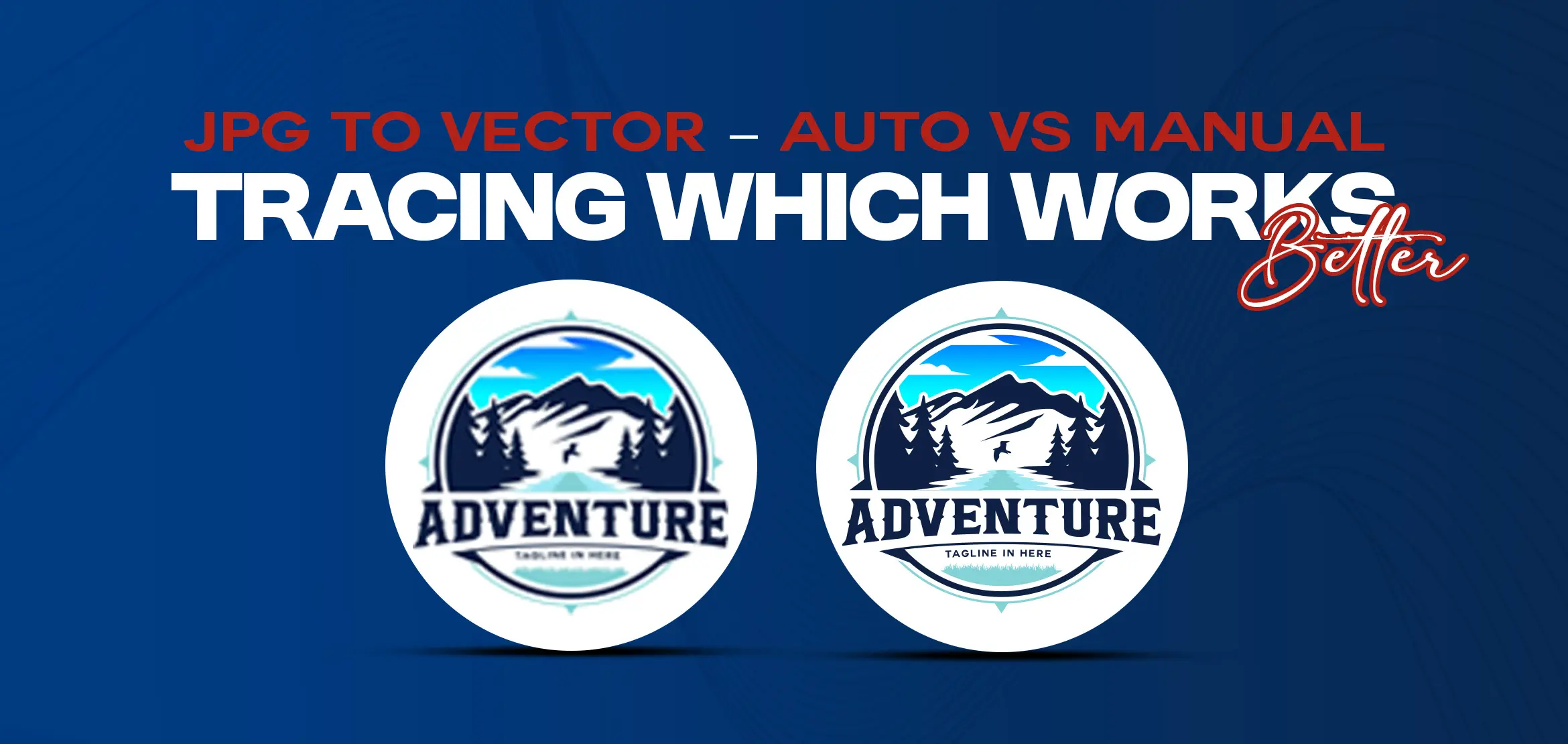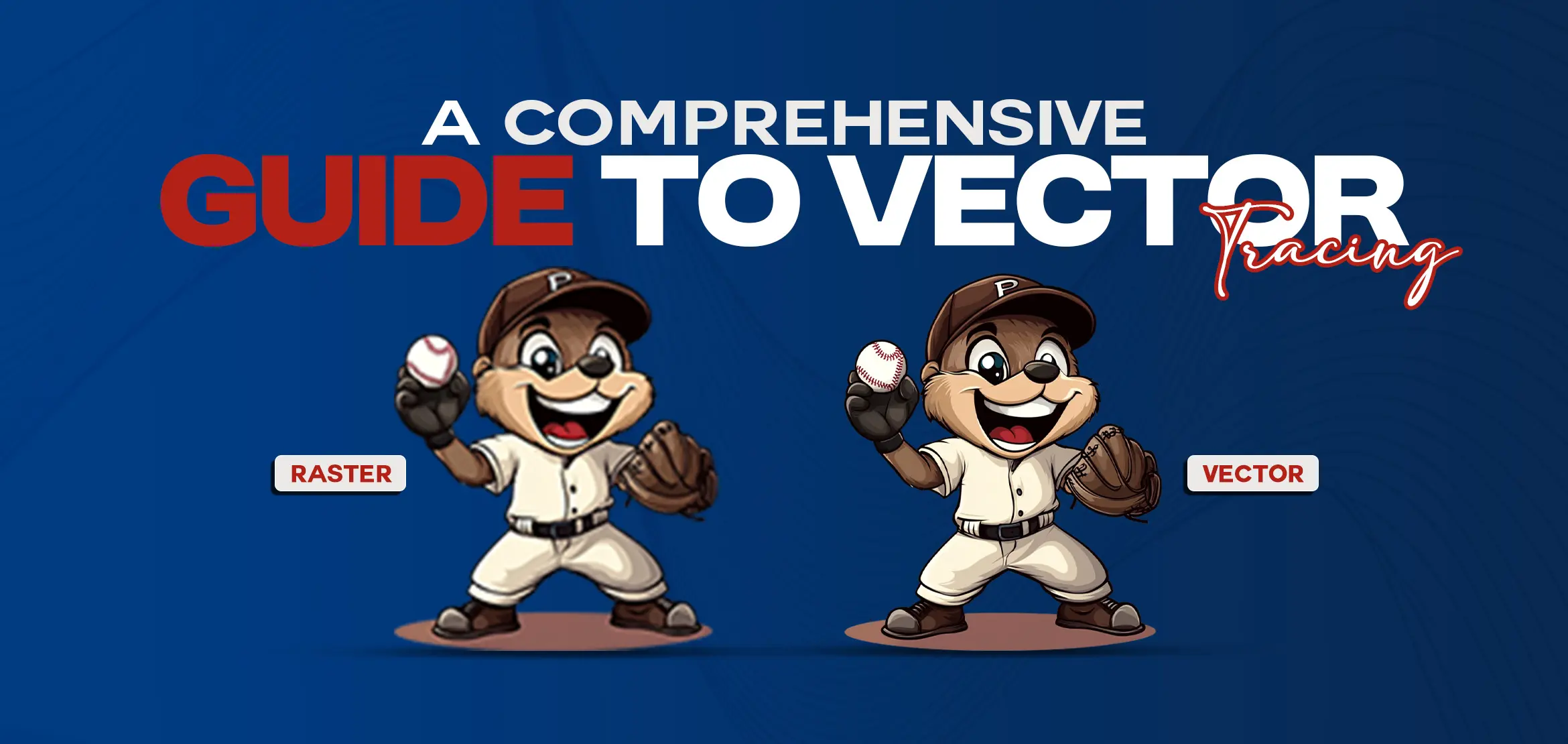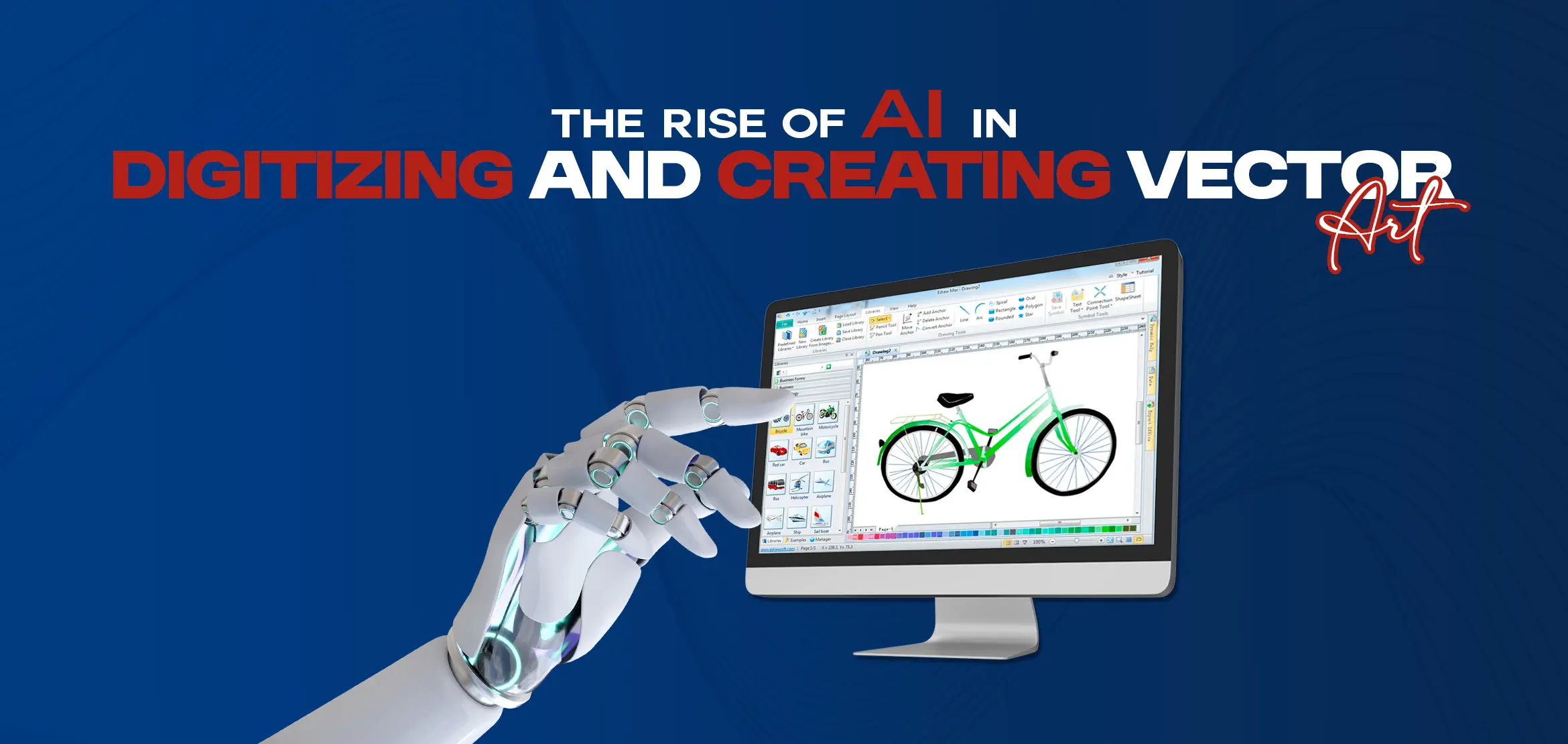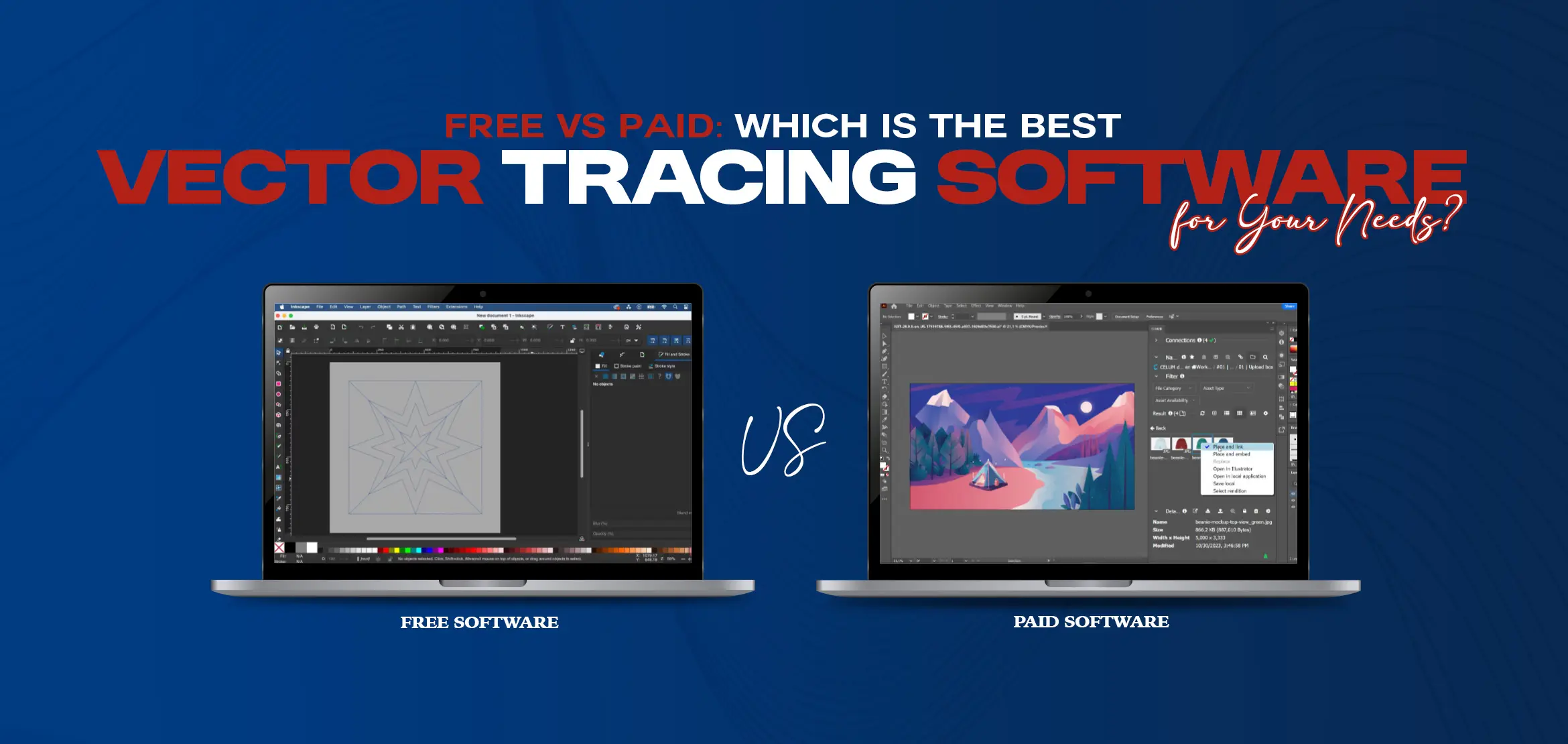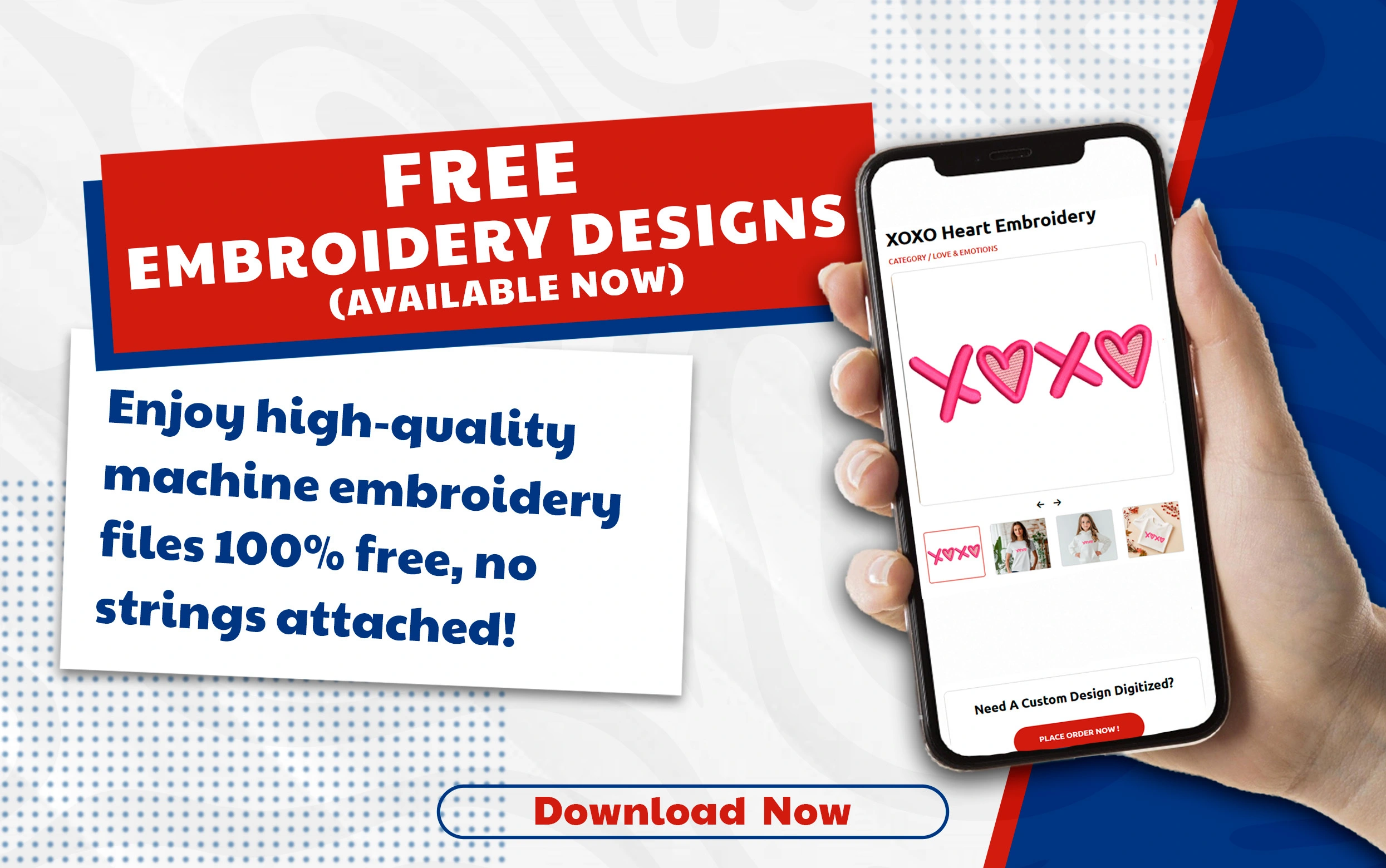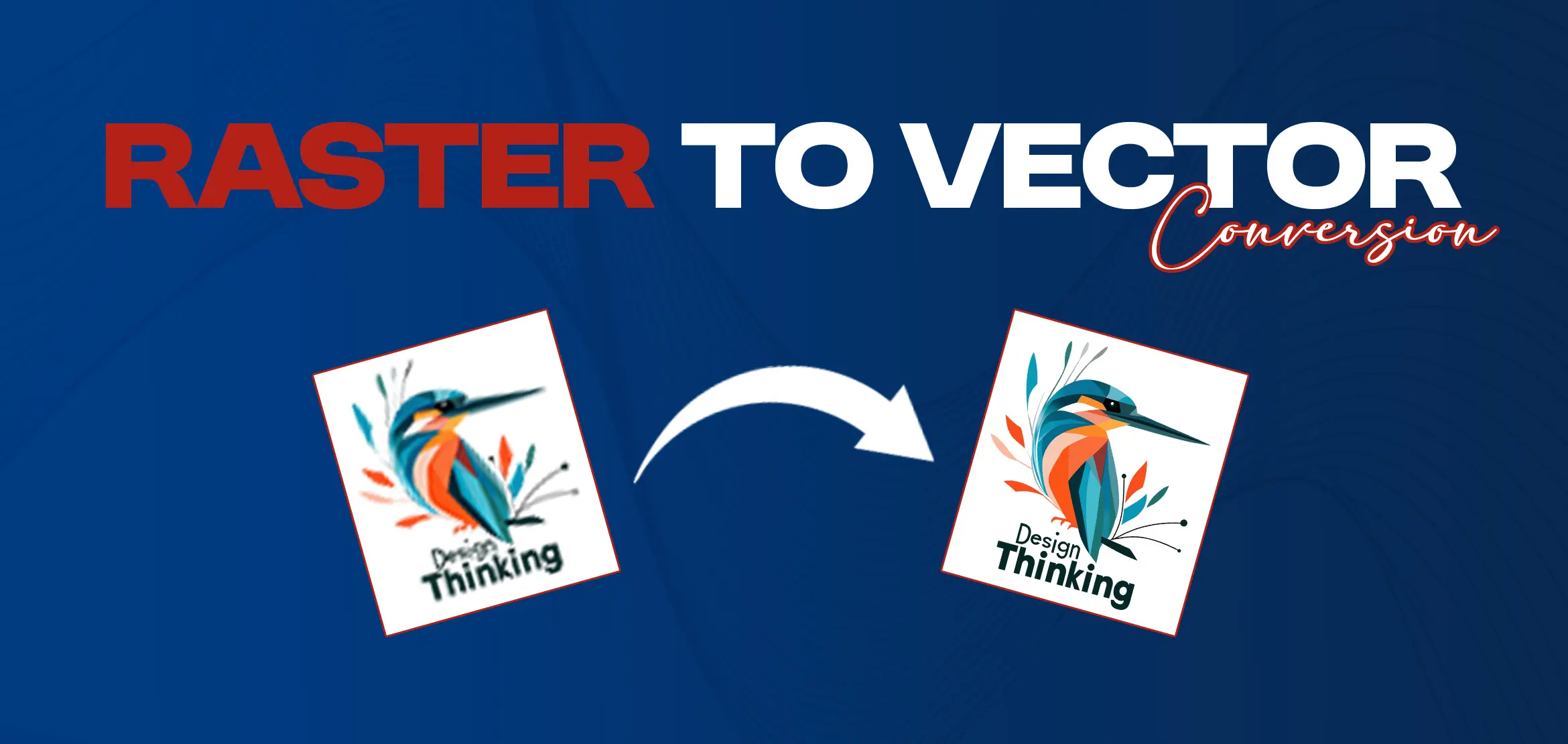
Raster to Vector Conversion
Clarity is key when it comes to visuals. Many times we’re given low-resolution files that look blurry. These are called raster images. They might look fine on your screen, but they aren’t ideal for printing or resizing. That’s why raster to vector conversion is so helpful. It takes a pixel-based image and converts it into a smooth, precise version made up of lines and curves. This is especially important for designers, print shops, and branding experts who need sharp, detailed visuals, think logos and marketing materials. With vector graphics, you achieve professional-grade results, every time.
Raster to vector conversion means changing a pixel-based image (based on small squares) into a clear and sharp image made of shapes, lines, and curves that can be resized without losing quality. Raster formats like JPEG or PNG lose sharpness when zoomed in or enlarged, you’ll see blurry edges. Vector graphics formats like SVG or AI stay clear and smooth no matter how much you scale them. The conversion process involves retracing the image using curves and paths. The result is an editable, precise image that looks great at any size and retains its accuracy, even for complex designs or logos. Raster images can serve their purpose on websites, but they fall short when you need to resize or print them. They tend to blur and lose detail. When converted to a vector, the image stays sharp at any size. Another main advantage is editing flexibility, whether modifying colors, shapes, or layout, vector files let you make these edits cleanly. This means you spend less time fixing designs and get more consistent results on different formats and materials. Screen Printing: Produces sharp images and simplifies color separation. Signs and Banners: Ensures large-scale prints remain sharp and clear. T-shirt and Apparel Design: Delivers clean lines needed for printing. Laser Cutting and Engraving: Provides precise vector paths for cutting machines. Logo Restoration: Convert old or low-quality logo files into sharp vector versions. Product Packaging: Keeps logos and graphics sharp in high-resolution prints. Choosing the right software depends on your needs. Adobe Illustrator is a top choice and offers a feature called “Image Trace,” which makes conversion easier. CorelDRAW is another popular software. If you’d like a free option, Inkscape is a solid open-source program that includes tracing features and supports common vector formats. Each of these software programs can deliver great results, it just depends on how much control and precision you need for your project. Well, software like Adobe Illustrator and Inkscape has advanced vector tracing features that are accessible to most users, achieving flawless results requires precision and time. Even after spending hours refining your image, small mistakes can still affect the entire design. Misaligned paths, missing details, or uneven edges often make the final output look unprofessional. Many people struggle to achieve their goals due to a lack of time. That’s why Digitizing USA steps in. We provide high-quality vector tracing/raster to vector conversion services in the USA and we do it without compromising on quality. With thousands of satisfied customers, our team delivers clear, accurate vector files that maintain the quality of your design. Whether it’s for logos, T-shirts, banners, or any print work, we make sure your artwork looks sharp and professional exactly as you had imagined. Place an order now, we’ll deliver it within 2 to 6 hours, ready for any use. We provide affordable prices you won’t find elsewhere. Turning raster images into vector files is a smart step in any visual design or production workflow. It gives you clean, scalable graphics that keep their quality across all uses. Whether you’re working on logos, bringing old artwork back to life, or preparing designs for print or digital platforms, having a high-quality vector version makes a big difference. It saves editing time, boosts presentation quality, and gives you consistent results every time. If you often deal with pixelated or low-resolution images, taking a little extra time to convert them to vector format can make your work look more professional and polished.What is Raster to Vector Conversion?
Why Convert Raster Images to Vector Format?
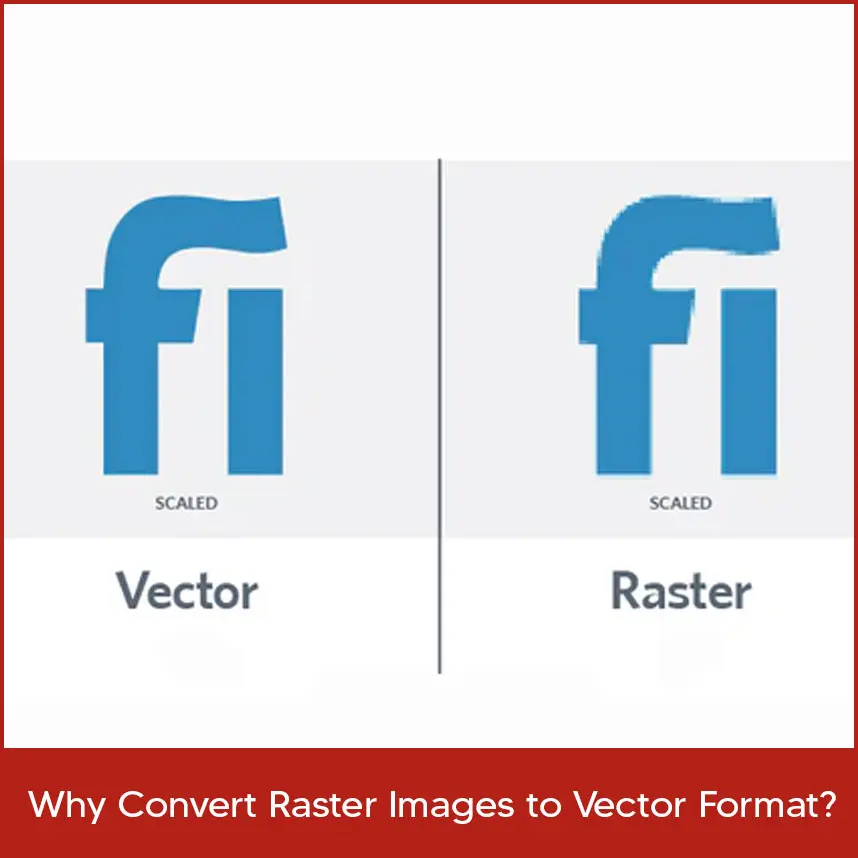
6 Common Use Cases for Raster to Vector Conversion
Key Differences Between Raster and Vector Graphics
Which is the Best Software for Raster to Vector Conversion?
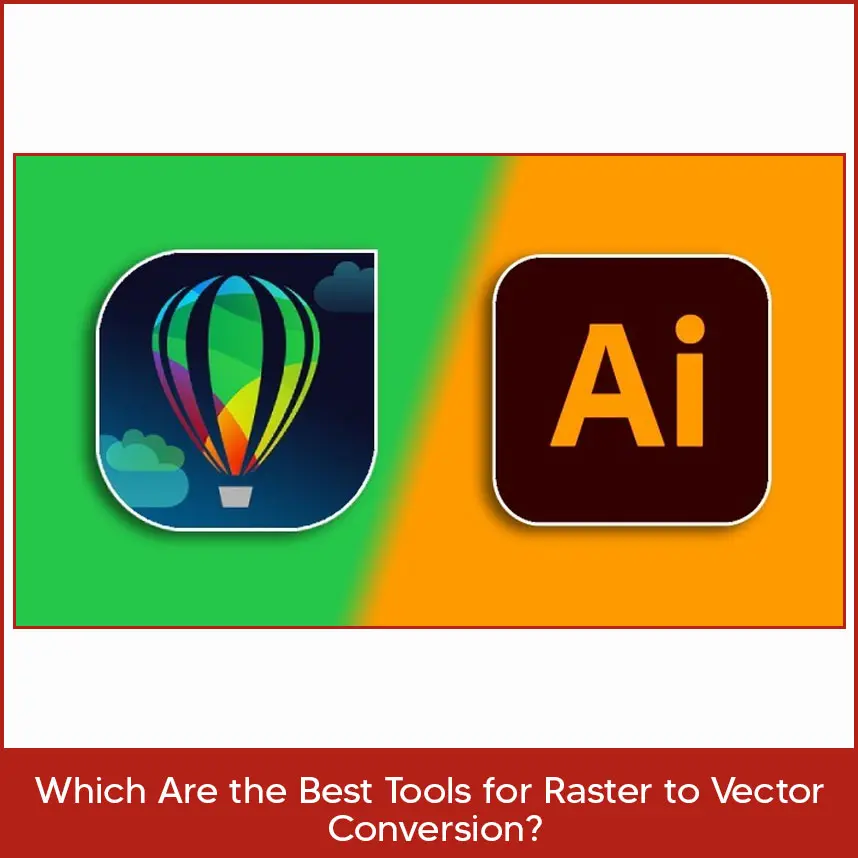
Final Thoughts
